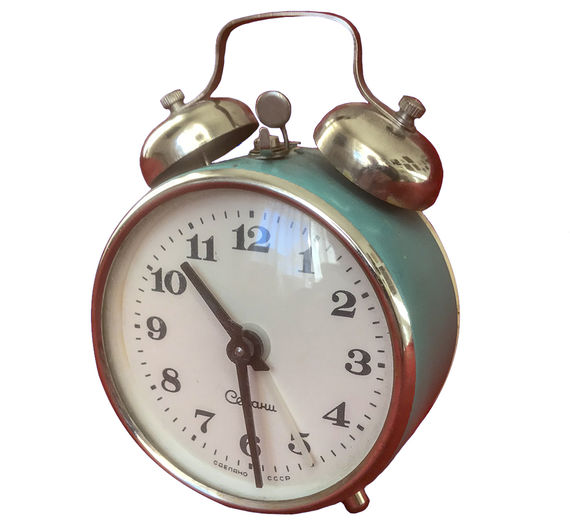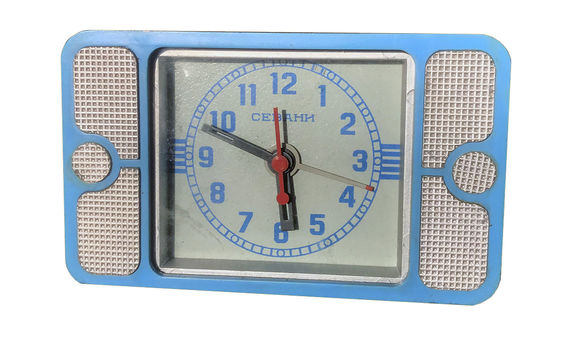The first wave of Armenian feature films released after the denouncement of the Stalinist regime in 1956 had an almost obsessive fixation on contemporary life. Their narratives revolved around massive urban developments, technological innovations, industrialization and changing cultural fashions that heralded the onset of post-war modernity and changing customs. People had become freer to indulge in a bit of living and fun after all the drudgery of Stalin's repressive era.
What these films also contain – silently lurking in the background – are the first signs of consumer desire that was quickly becoming a concrete outcome of Nikita Khrushchev’s liberal-minded economic and cultural reforms. Things, devices and new apartments served as a manifestation of this drive towards modernization. They also emphasized Armenia's efforts in becoming an industrially-progressive, emancipated nation with a cultured population. As a result, objects had acquired renewed significance as tokens of exchange and markers of identity. We see this in films like “Her Imagination,” “Song of First Love” and “Four in One,” which breathlessly showcased new gadgets like cars, TV sets and portable record players, while surreptitiously acting as veiled advertisements for the output of the local light industries.
Of all such everyday objects, clocks and watches were a ubiquitous, if not exactly prominent part of these films – much as they were in the actual households. Soviet society had a pedantic obsession with punctuality and productive use of time. Hence, the production of various time-keeping devices in the USSR had become a major industrial branch even before Khruschev's reforms. In Armenia, watches and clocks were considered an item of luxury and the old mechanical wall-piece in the living room would survive for generations as part of the furniture. In fact, up until the 1960s, most Armenian households still relied on the rooster or their infallible grandmothers to get them up in the mornings and set the course for the day.
However, the Soviet socio-political system strove to maximally flatten cultural differences between its various members, and household appliances were an effective means of achieving homogeneity. To this end, factories specializing in new products were often established in regions that had no relevant local contexts for such manufacturing. As war raged in the early 1940s, some of the more far-off corners in the USSR were considered to be safer locations for the establishment of such new industrial units. Thus, in 1943, the Soviet Ministry of Economy decided that Yerevan should have its own clock factory. Only three such outfits existed in the USSR prior to this and, at the time, the Yerevan Clock Factory (YCF) was the only one outside of Russia to release such a product.
Initially beginning as an assembly unit for imported parts, YCF developed into a large plant that designed and produced its own line of mechanical table clocks and pocket watches. Constructed in the early 1950s, the factory's massive building in the city's Arabkir district housed thousands of workers who, by the mid 1970s, were putting out over four million clocks annually.[1] Most of the stock was exported to other Soviet republics and to 60 countries worldwide, including the UK, France and Cuba. In fact, demand grew to such a degree that a new production plant – the Yerevan Factory of Fine Watches (YFFW) – was founded in 1961 to satisfy the increasing consumer appetite for more diversified luxury goods. In the mid-1970s, both factories were reorganized in order to optimize manufacturing and make their products more marketable. The YCF adopted the brand name Sevani, while the YFFW released its goods under the trademark Nairi. By this time, each plant had its own key focus, with Sevani specializing in alarm clocks and Nairi releasing high-end musical table-clocks and gold wristwatches.
What is fascinating about these products today is their stern approach to design. Sevani started with a line of round mechanical alarm clocks encased in a metal ring. Small and unpretentious, these clocks were examples of pure functionalism: unobtrusive and designed to dutifully carry out a single role. Most of these 1950s alarms work perfectly well even today and their durability speaks volumes about the 'protestant' mentality behind Soviet manufacturing. If the design was tested and dependable, why go to great lengths to create a new one? It was only in the 1960s that a marginally wider-range of models began to appear on the stalls. The consumer could now choose between square, rectangular, curved or even tear-shaped designs in one or two colours. This frugal variety expanded slowly, with one or two new models being released every second year.
Trying to spice things up a bit, Nairi released table clocks with musical mechanisms or radios, which also paid more attention to style. Using complex shapes and combinations of materials, Nairi's clocks took on an additional function as objects of decor. Their geometric volumes were almost architectural in their spatiality and drew attention to the play with composition and form. In general, the output of these Soviet-Armenian clock factories during the 1960s and 1970s followed the international dictums of late-modernist design and the logic of functionalism – first introduced by the German Bauhaus and the Russian Constructivists. The simplicity and modularity of the aesthetics, the reliance on machine-based processes and artificial materials was reflective of the global drive towards standardization and practicality in industrial design.
These conceptually strict and abstract sensibilities were quite alien to the tastes of the ordinary populace in Armenia. Objects were expected to tell certain 'national' narratives, carry representational codes that tie in with traditional perceptions of beauty and exude a sense of luxury. Like hand-woven carpets, for example. In the late 1970s, these reactionary tendencies began to infiltrate across all production lines in Armenia. Ornaments, figurative symbols, gilded edges and gaudy colours also began to appear on the Sevani and Nairi clocks. By the time Armenia gained independence in 1991 and its industrial ecosystem grounded to a halt, the production of the Yerevan clock factories had fallen back on reproducing prosaic forms, with cheaply printed florid decorations.
From our perspective today, the clocks produced in Yerevan from the 1950s to the 1980s may appear like mundane artefacts of a more 'innocent' era. The narrow scope of their design aesthetic, the use of common industrial materials, their rudimentary mechanisms and functions make them too rudimentary, even as vintage collectable material. Yet, these time-keeping devices also speak of lifestyles, economic relations and cultural perceptions, which were once deemed to be utopian and forward-thinking. The limited, yet non-hierarchical approach to the production of objects of everyday use in Armenia and the USSR, aimed to contribute to a more equitable social space, in which household items would perform the same role for everyone.
This democratic outlook engendered a product 'species' that has long disappeared from the field of capitalist economy and consumer culture – something that Soviet theorists of design liked to call an “honest object.” Unlike the infinite number of products forced upon the consumer today, the output of Soviet manufacturers strived for total transparency in its quality and function. Reminiscent of Ikea's ethos of “timeless” functionalism, the humble modularity of the Sevani alarm clocks and Nairi table watches seems like a form of virtue in comparison to the cunning seductiveness of “designer goods” today. What becomes tangibly and movingly apparent in the Soviet-made clocks, is the commitment to the egalitarian spirit of modernist design. It shines a light on the noble intents of local manufacturers, who created appliances that were fit for any interior and allowed people to go about their business without unnecessarily fussing over the world of things.
The ruins of Yerevan's Clock Factory are a melancholic reminder of a once mighty industry that had emerged out of ideological considerations, and made Armenia into an internationally-recognized brand. In contrast, Nairi's plant has become one of the very few industrial sites in Armenia to survive the collapse of the USSR. In 2001, the factory was refurbished by the Swiss-Armenian company AWI, which produces fashionably elegant wristwatches primarily intended for the European and Asian markets. Meanwhile, the mechanical Sevani and Nairi clocks have acquired novel significance as charming witnesses to simpler and more innocent times, which await their new owners on the stalls of the antique dealers at Yerevan's Vernissage market.
-----------------------------------------
1- For further information on the clock industry in Armenia, see the Soviet Armenian Encyclopedia, vol.3, Arm. SSR Academy of Sciences, Yerevan, 1977, p.579.















